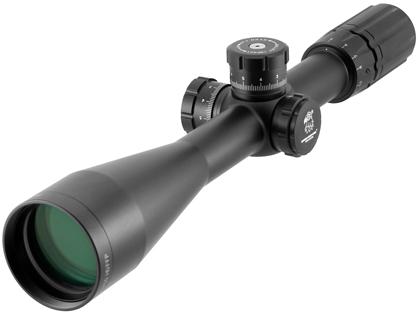I started using First Focal Plane (FFP) on a Bushnell Elite Tactical 4500. It has an old school Mil dot reticle, and 5 Mils per rev. I believe this was in 2010. I hunted with it, and competed in Tactical Long Range rifle matches reaching to 1000 yards, and occasionally beyond. I started the scope on a Savage .308 Win from the Law Enforcement and Military line. The scope is still in my collection atop a .22-250 I use for prairie dog hunting. I went on a quest in search of a scope with better features, and had a wish list of features I wanted in the next scope. I wanted, at least, 20 X on the high end of the magnification. I wanted to keep the 50 mm objective, keep side focus, I wanted a better reticle, one with .5 Mil hash marks between the 1.0, 2.0, 3.0 etc., sub-tensions, and I wanted 10 Mils per revolution.
Many of us that have shot long range on a 5 Mil per rev scope have been a rev off, and not realized it. That being what we quickly see is “0” is actually plus 5 Mils dialed into the elevation. Well, with a 10 Mil per rev turret, most cartridges suited for thousand yard (and less) shooting won’t need more than 10 Mils to get there. So you rarely have the need for more than 10 Mils. That, for me, is just a factor to keep me from messing up, especially when I am crunched for time.
Looking for scopes with all of the features I listed really narrowed the playing field. And with the retail price tag of the SS 5-20 at $1500, for the illuminated version, it was significantly more affordable than the other choices I had. I actually obtained it “used” from another shooter. The excellent warranty and his word that the scope was sound left me with no reservations. I paid the money and received the scope in the mail a few days later, never having performed a “test drive”, prior to committing to the payment. This was in 2012. Now the scope has served on the .308 Winchester for 1200 rounds, a re-barrel into .260 Rem. for another 2500 rounds, and is now on a 6.5 Creedmoor that I have put 250 rounds through. Four years, and approximately 4000 rounds, with lots of dialing. I have continued to hunt with the scope, and have competed in with it, both in all manner of environmental conditions January to December, extremely windy and dusty to rain falling while shooting. The scope has been worked very hard, making adjustments on windage and elevation, parallax, and magnification adjustments. The number of adjustments I have made to the scope is well into several thousand, and it has never failed!
I was quickly impressed with glass quality performing load development on the .260 Rem. I had white paper set at 300 yards performing a ladder test, in clear sunny conditions. I was able to see .264” bullet holes from 300 yards away! Since then the scope has been used in the twilight hours at dawn and dusk, and continues to provide a clean sight picture well before and after legal hunting light, in Texas. I use the scope several days each week both shooting, and using it for a spotting scope spotting for students out to 800 yards.
Tracking. The scope has always tracked exactly as it should. While I admit I have failed to perform a box test on the scope, I have also not felt the need to this late in the game. The only time I tested the tracking was a day before a match. I had very tall white paper at 100 yards, and dialed up 5.0 Mils, and placed a bullet exactly 5.0 Mils above point of aim. However, one of my self-improvement exercises is to make a cold bore shot at distance. I do this at least one time per week, sometimes multiple times per week. I shoot cold bore at 500 yards and beyond, and the scope has always put the bullet at the elevation correction I have told it to. When I miss, it is completely my fault due to the wrong wind judgment, no fault of the scope. I have the scope mounted in Badger Ordinance steel, four screw rings, and on an aluminum EGW 20 MOA base. The scope has been shockingly consistent at maintaining zero, even with me picking my rifle up from the ground by grabbing the scope tube. That makes the uninitiated cringe. But with a solid scope, rings, and base it will hold up just fine.
The only complaint I have with the scope is when zeroing turrets. The scope’s turrets are the single screw through the center design. The turret has a female brass ring with teeth like a gear, and the erector has a male counterpart to the female, also made of brass. There have been occasions where the turret would not make for a perfect zero reading. It has been .05 Mil up or down, or left or right. That is easily overlooked as the quality of every other feature of the scope is so high, especially a scope at a retail price well below other brands with the same features.
by Jason Garvey

Leave a Reply